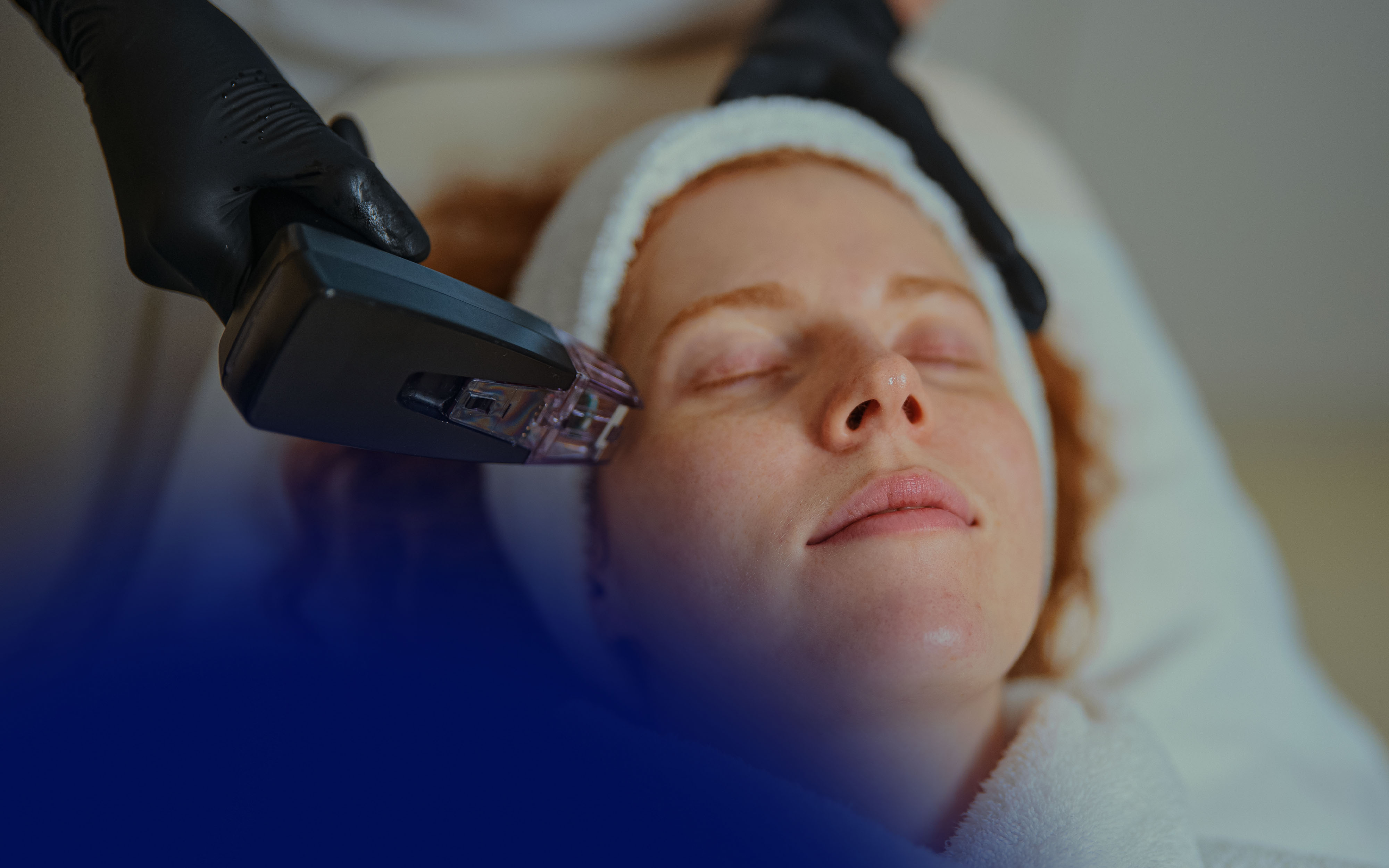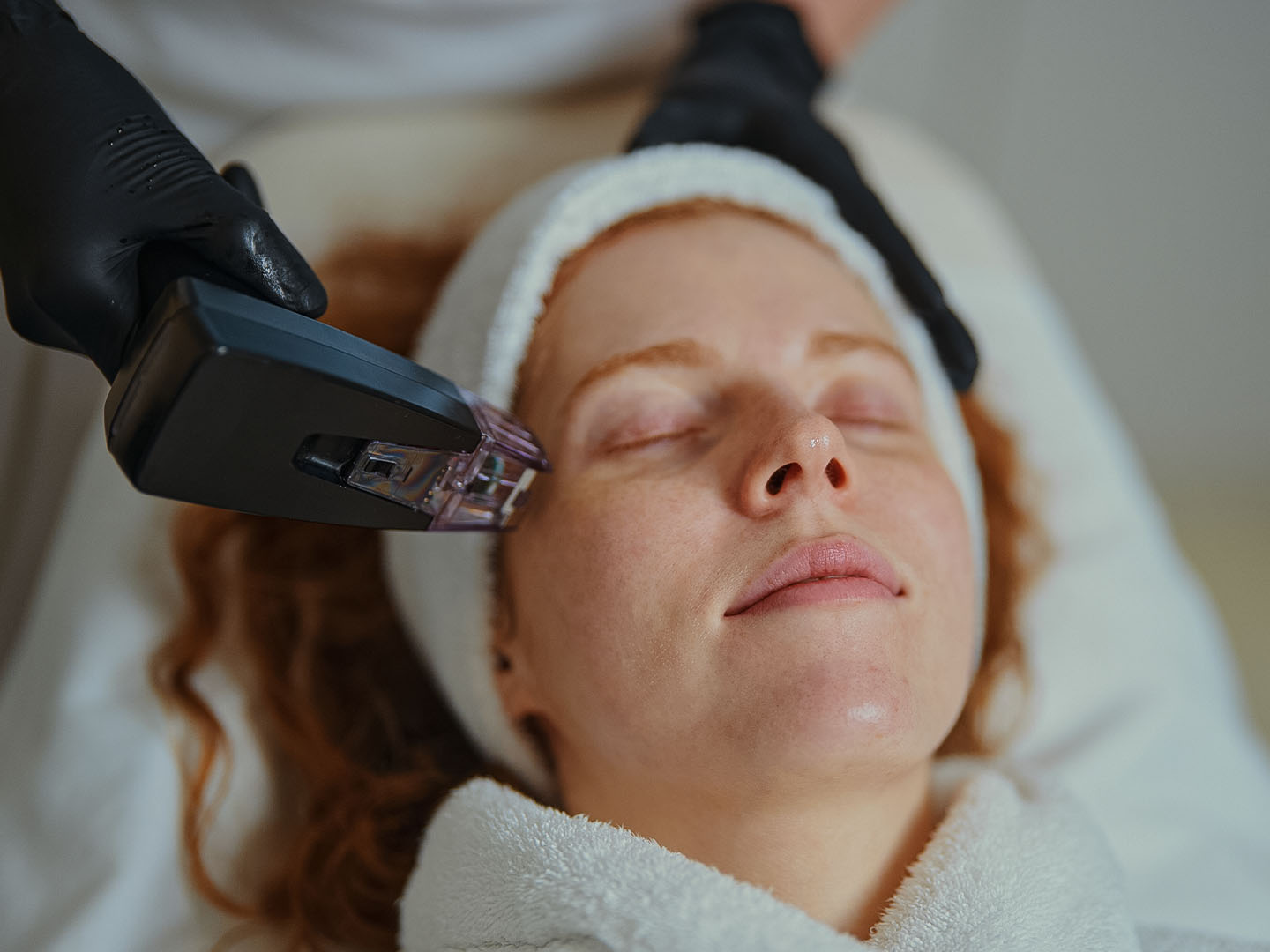
Microneedling with Sculptra is quickly becoming a go-to protocol in modern aesthetic clinics. For patients seeking smoother skin, tighter contours, and long-term collagen regeneration without surgery, this combo delivers impressive, natural-looking results. When done correctly, microneedling and Sculptra work in harmony, like two artists painting on different layers of the same canvas. The results speak volumes: microneedling with Sculptra before and after photos clearly show significant improvement and patient satisfaction.
This guide walks you through what Sculptra is, how it works, why it’s often paired with microneedling, and what practitioners should know to achieve reliable and safe outcomes.
What Is Sculptra?
Sculptra is a biostimulatory filler composed of poly-L-lactic acid (PLLA). Unlike hyaluronic acid (HA) fillers that physically volumize areas immediately, Sculptra works by stimulating your body’s own collagen production over time. Once injected or applied topically, PLLA particles activate fibroblasts, which gradually restore dermal volume and improve skin quality.
Does Sculptra Lift the Face?
Sculptra doesn’t "lift" in the traditional filler sense, but it improves skin firmness and elasticity over time. As collagen builds in the treated areas, patients often report improved cheek contour, jawline definition, and overall skin tightness. It’s ideal for subtle lifting without looking “done.”
Is Sculptra Better Than Botox?
It’s not a matter of better, it’s about the goal. Botox temporarily reduces muscle movement to smooth dynamic wrinkles. Sculptra works deeper, targeting structural collagen loss. Many patients benefit from using both as part of a layered rejuvenation plan.
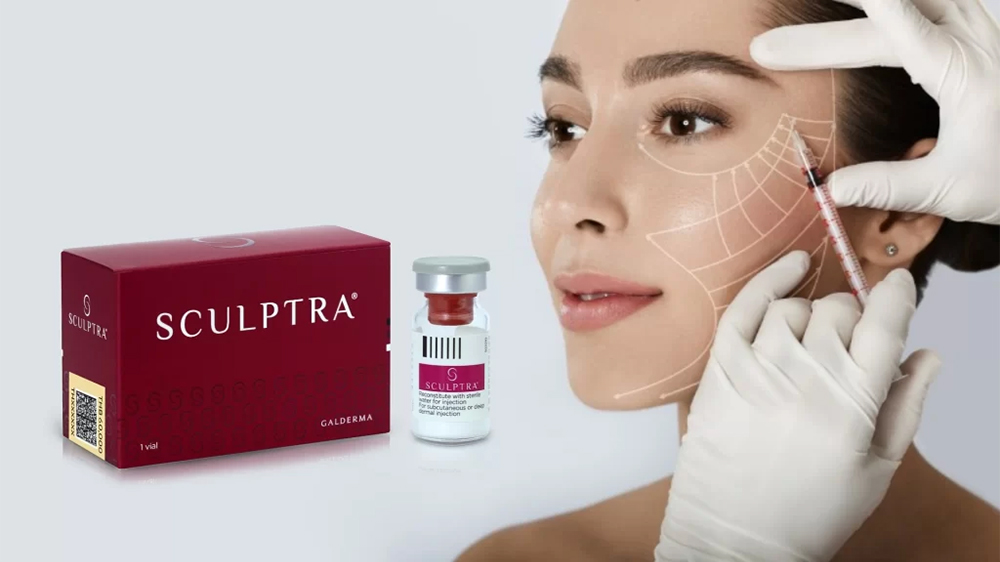
Can You Combine Sculptra with Microneedling?
Yes, and that’s where things get interesting.
Microneedling creates controlled micro-injuries to the skin, triggering a natural healing response and collagen formation. This is known as collagen induction therapy. When you pair that with Sculptra, you essentially “supercharge” both treatments. Microneedling opens microchannels that allow better absorption of topical Sculptra, while the product itself amplifies the fibroblast response.
This microneedling and filler combo is ideal for patients looking to improve:
- Skin texture and tone
- Mild to moderate volume loss
- Laxity in the face, neck, or décolletage
- Popular treatment areas include the cheeks, jawline, temples, neck, and chest.
Mechanism of Action: How Each Treatment Works
Microneedling
- Uses fine needles to puncture the epidermis and upper dermis.
- Triggers wound healing cascade: release of growth factors, collagen, and elastin production.
- Improves texture, acne scars, pores, and mild laxity.
Sculptra (Poly-L-lactic acid)
- Injected or applied topically post-needling.
- Stimulates fibroblasts to lay down new collagen over 6–12 weeks.
- Results last up to 2 years with proper maintenance.
Microneedling with Topical Sculptra:
- Microneedling enhances the penetration of diluted Sculptra.
- This delivery method minimizes the risk of nodules that may occur with improper injection technique.
- Useful in areas like the neck or chest, where traditional injection is less commonly done.
Common Question: “Does Your Face Go Back to Normal After Sculptra?”
Yes, but not in the way patients might fear. There's no facial distortion. Once the swelling subsides, collagen develops gradually, leaving a refreshed appearance rather than an altered one. It doesn’t freeze expression or create puffiness when done correctly.

How Long Does Microneedling with Sculptra Last?
Patients typically notice visible improvements within 4–8 weeks, with results continuing to improve for several months as collagen builds.
Treatment Plan:
- 2 to 4 sessions spaced 4–6 weeks apart.
- Maintenance every 12–18 months depending on age and degree of volume loss.
Patient-Reported Outcomes:
- Firmer skin
- Improved elasticity
- Better glow and hydration
- Natural volume restoration
Microneedling alone improves surface quality. Sculptra alone adds deeper support. Together, they offer comprehensive rejuvenation.
Ideal Patient Profiles: Who Benefits Most from Microneedling with Sculptra
Not every patient is a good candidate for microneedling with Sculptra, but when the right individual walks into your clinic, the results can be game-changing.
This combination therapy is especially well-suited for patients showing early to moderate signs of aging. These are individuals who might not yet be ready for more invasive procedures but are noticing changes in their skin's tone, texture, and firmness. They may complain of looking “tired,” feeling that their skin has lost its bounce, or that makeup no longer sits well on their skin. These are clues that collagen loss is underway.
Ideal Candidates:
- Patients in their 30s to 50s with early facial volume loss or mild skin laxity who want to intervene before sagging becomes more pronounced.
- Individuals with uneven skin tone, crepey texture, or enlarged pores, issues often addressed effectively by microneedling but improved more substantially with the added support of Sculptra.
- Men and women noticing hollowing in areas like the temples or midface but who prefer a gradual correction over the immediate volume of traditional dermal fillers.
- Those seeking skin tightening on the neck or chest, where subtle rejuvenation without bulk is desirable.
This protocol also resonates well with patients who are focused on prejuvenation, younger individuals who want to preserve collagen, prevent skin laxity, and maintain youthful contours over time.
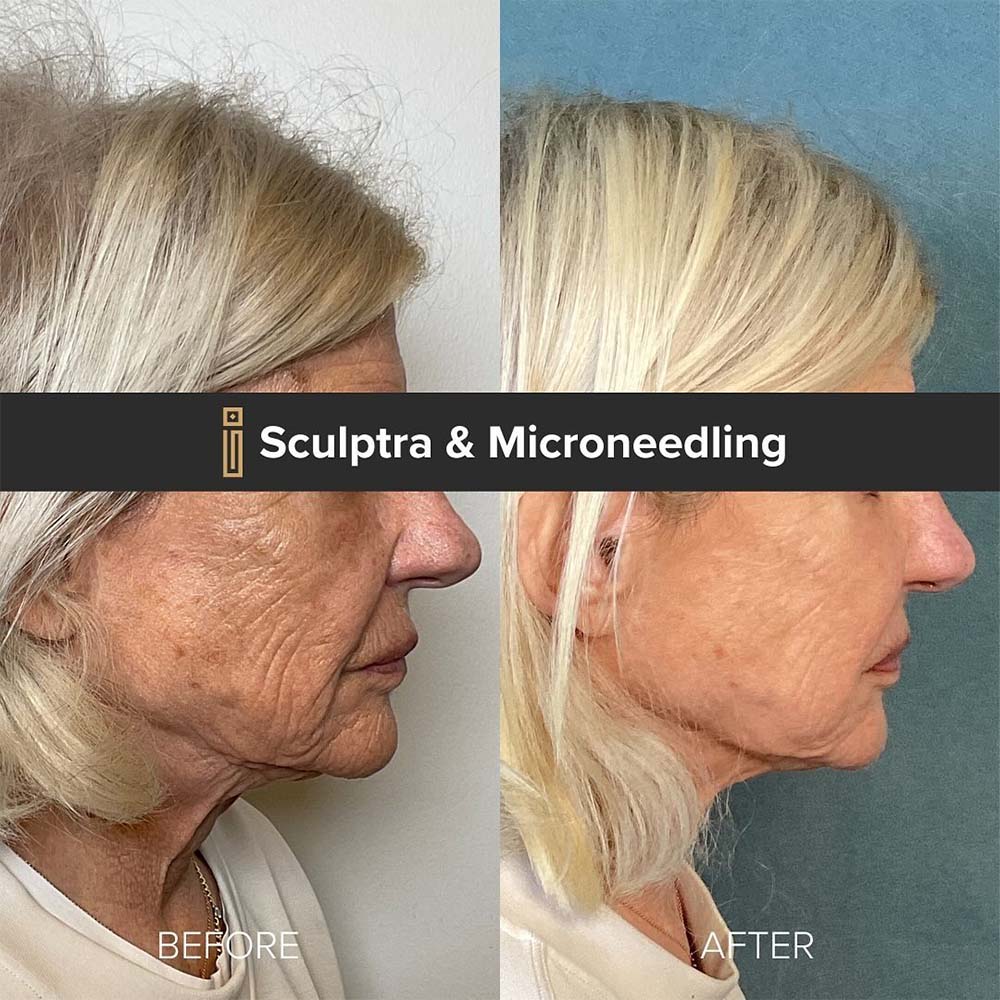
Who Should Avoid Sculptra or Combination Treatments?
While microneedling with Sculptra is generally safe, it’s not for everyone. Patients with certain skin conditions or medical histories may be at higher risk for complications.
- Avoid or proceed with caution in patients who have:
- Active acne breakouts or ongoing skin infections, especially bacterial or fungal.
- Severe inflammatory skin conditions such as eczema, psoriasis, or rosacea flares.
- A history of keloid or hypertrophic scarring, as microneedling may exacerbate the risk.
- Autoimmune conditions or immune suppression, which can alter healing response or elevate risk for granuloma formation.
- Allergy to poly-L-lactic acid or any component of the Sculptra formulation.
Additionally, caution is warranted for patients with very thin skin, especially under the eyes, where both microneedling and Sculptra require expert-level control to avoid visible irregularities or overcorrection.
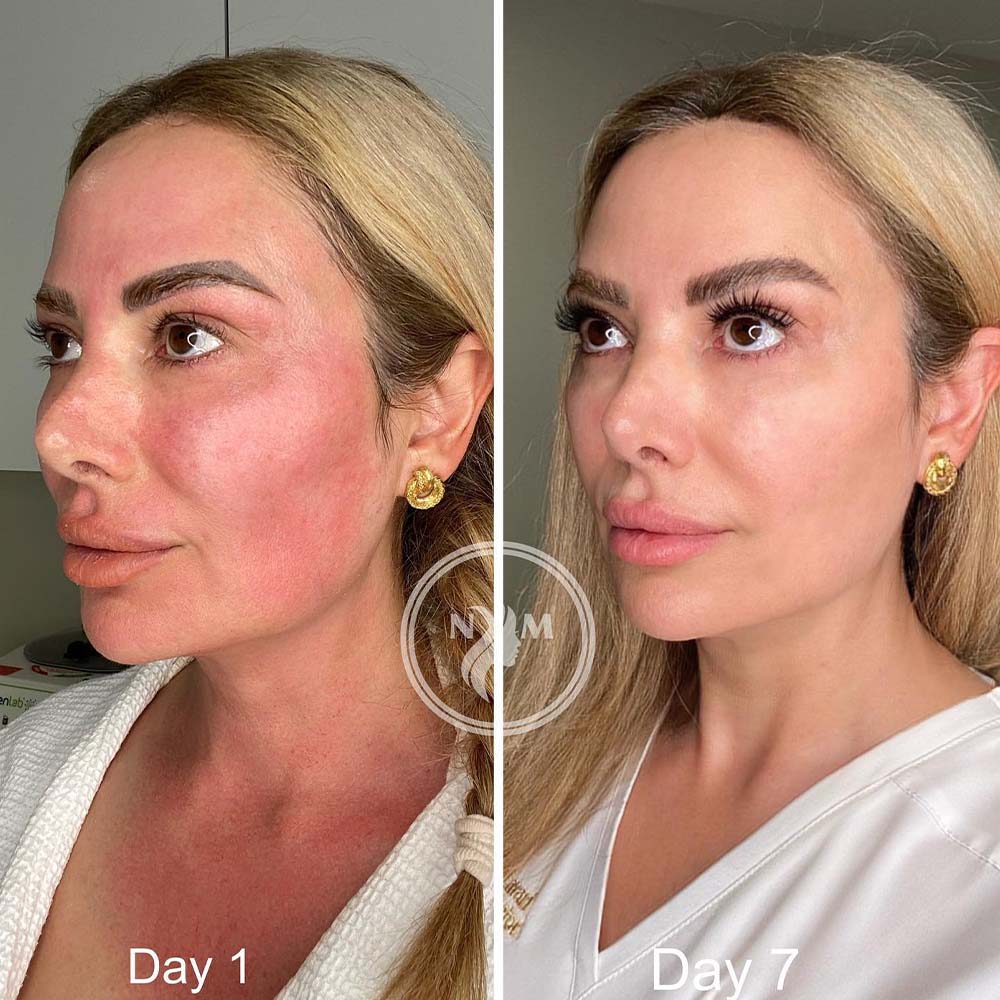
Technique Tips and Protocol Insights
Microneedling Depth:
- 0.5 mm for areas like the neck or periocular region
- 1.0–1.5 mm for cheeks and jawline
- Depth varies depending on skin thickness and goals
Topical Sculptra Application vs. Microinjections
- Topical application post-needling is less invasive and ideal for large surface areas.
- Microinjections are more targeted and useful for volume restoration.
Post-Treatment Care:
- Redness and swelling typically subside within 24–72 hours.
- Avoid makeup, direct sun, and active skincare for 48 hours.
- Encourage patients to hydrate and avoid strenuous exercise immediately post-procedure.
Educate Patients on Gradual Results: Explain that it’s not a one-and-done treatment. Results build progressively and subtly, which many patients prefer.
What Is the Downside of Sculptra?
While generally safe, complications include:
- Lumps or nodules (if injected too superficially)
- Bruising and swelling
- PIH (post-inflammatory hyperpigmentation) in darker skin types
Can Sculptra Go Wrong?
Yes, when technique is poor. Over-concentration, superficial placement, or incorrect dilution can lead to granulomas. Always follow manufacturer dilution guidelines (usually reconstituted with sterile water and allowed to sit for 24+ hours before use).
Practitioner education is key. See our aesthetic courses for in-depth Sculptra training and microneedling certification.
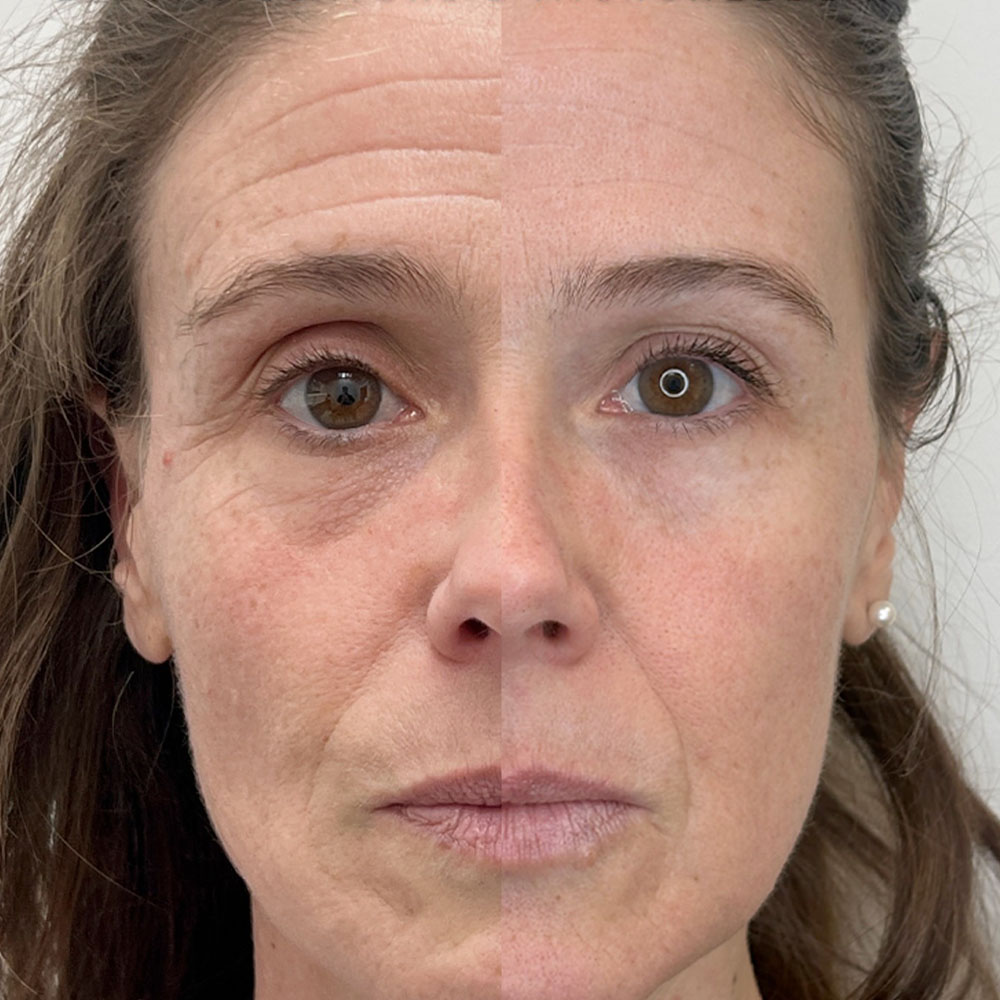
FAQ
Is Microneedling with Sculptra Worth It?
For patients seeking gradual, long-term skin improvement, it offers excellent ROI. The combination targets both structure and surface, something few treatments can do.
How Much Does Microneedling with Sculptra Cost?
Pricing varies by region and number of sessions but typically ranges from $800 to $1,200 per session.
Does Sculptra Make Your Face Look Bigger?
It can restore youthful volume but doesn’t create an overfilled or puffy look when used properly.
How Long Do You Stay Puffy After Sculptra?
Mild swelling may last 1–3 days, particularly with injected Sculptra. Topical application post-microneedling results in minimal downtime.
Does Sculptra Help Under Eyes?
Yes, but cautiously. The under-eye area requires expert technique due to thin skin. Microneedling with diluted Sculptra may be a safer approach for subtle improvement in hollowness and crepey texture.
Final Thoughts
Microneedling with Sculptra is a synergistic protocol that delivers both surface and deep tissue benefits. It's ideal for patients who want gradual, natural-looking skin tightening and rejuvenation without dramatic change or downtime. With proper technique, patient education, and treatment planning, this collagen stimulation therapy can become a cornerstone in your aesthetic toolbox.
To learn more about implementing this treatment in your clinic, check out our advanced aesthetic courses and Sculptra training modules.
Sources
- Spataro EA, Dierks K, Carniol PJ. Microneedling-Associated Procedures to Enhance Facial Rejuvenation. Facial Plast Surg Clin North Am. 2022;30(3):389-397. doi:10.1016/j.fsc.2022.03.012 https://pubmed.ncbi.nlm.nih.gov/35934440/
- Fabi S, Hamilton T, LaTowsky B, et al. Effectiveness and Safety of Sculptra Poly-L-Lactic Acid Injectable Implant in the Correction of Cheek Wrinkles. J Drugs Dermatol. 2024;23(1):1297-1305. doi:10.36849/JDD.7729 https://pubmed.ncbi.nlm.nih.gov/38206151/
- Keni SP, Sidle DM. Sculptra (injectable poly-L-lactic acid). Facial Plast Surg Clin North Am. 2007;15(1):91-vii. doi:10.1016/j.fsc.2006.10.005 https://pubmed.ncbi.nlm.nih.gov/17317560/
- Beer KR, Rendon MI. Use of sculptra mark in esthetic rejuvenation. Semin Cutan Med Surg. 2006;25(3):127-131. doi:10.1016/j.sder.2006.06.004 https://pubmed.ncbi.nlm.nih.gov/17055391/
*This article is intended for licensed medical professionals. All protocols, dosages, and treatment insights referenced herein are based on published literature. The content is not intended to encourage application, diagnosis, or self-treatment of unlicensed individuals, and should not be used as a substitute for the clinical judgment of a qualified healthcare provider.
Disclaimer:
This article is intended for licensed medical professionals. All protocols, dosages, and treatment insights referenced herein are based on published literature. The content is not intended to encourage application, diagnosis, or self-treatment of unlicensed individuals, and should not be used as a substitute for the clinical judgment of a qualified healthcare provider.
